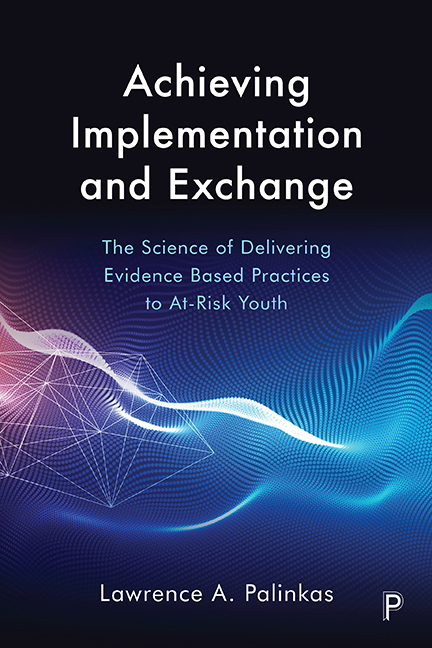 Achieving Implementation and Exchange
Achieving Implementation and Exchange Published online by Cambridge University Press: 13 April 2022
It serves us because we understand the system better and make better policy decisions, and it helps them because they get to showcase their skills and publish things and get more grants and stuff. So it is a mutually beneficial process. I think what has happened with all of the systems change over the last year or two years is that the relationship has gone from mutually beneficial to symbiotic and absolutely positively critical for doing the work that we do. And the level of reliance is just skyrocketed exponentially and the partnership is more like closely intertwined than what it was previously…So people that you can rely on, that you can trust, that get it, that can be responsive to your needs real quickly and that can help you carry on the vision that you need to achieve in a short period of time, of having them as our partnership has been extremely beneficial, more so now than ever. (Policymaker, New York State)
In Chapter Five, the role of social influence networks in implementing EBPs was highlighted. These networks included staff members of one's own organization as well as peers working in other organizations in the same jurisdiction (that is, county) or in other jurisdictions. In the case of the CAL-OH study, the networks also included researchers who developed the EBP (TFCO) and the implementation strategy (CDT) and who assessed the effectiveness of the implementation strategy in scaling up the EBP. However, the specific role of these researchers was not addressed in the CAL-OH study, but rather was viewed implicitly.
In Chapters Six and Seven, two different models of evidence and implementation were introduced: a global model that is external to most settings, scientifically rigorous and generalizable across different settings; and a local model that is internal and originates within an agency or jurisdiction, based on personal experience, and specific to the needs of an organization and the community it serves. Global models typically represent the cultural understandings of researchers, while local models typically represent the shared understandings or cultural systems of practitioners and policymakers. However, there is little understanding of how these two models operate in tandem when researchers and practitioners/policymakers work together to implement an EBP.
To save this book to your Kindle, first ensure no-reply@cambridge.org is added to your Approved Personal Document E-mail List under your Personal Document Settings on the Manage Your Content and Devices page of your Amazon account. Then enter the ‘name’ part of your Kindle email address below. Find out more about saving to your Kindle.
Note you can select to save to either the @free.kindle.com or @kindle.com variations. ‘@free.kindle.com’ emails are free but can only be saved to your device when it is connected to wi-fi. ‘@kindle.com’ emails can be delivered even when you are not connected to wi-fi, but note that service fees apply.
Find out more about the Kindle Personal Document Service.
To save content items to your account, please confirm that you agree to abide by our usage policies. If this is the first time you use this feature, you will be asked to authorise Cambridge Core to connect with your account. Find out more about saving content to Dropbox.
To save content items to your account, please confirm that you agree to abide by our usage policies. If this is the first time you use this feature, you will be asked to authorise Cambridge Core to connect with your account. Find out more about saving content to Google Drive.